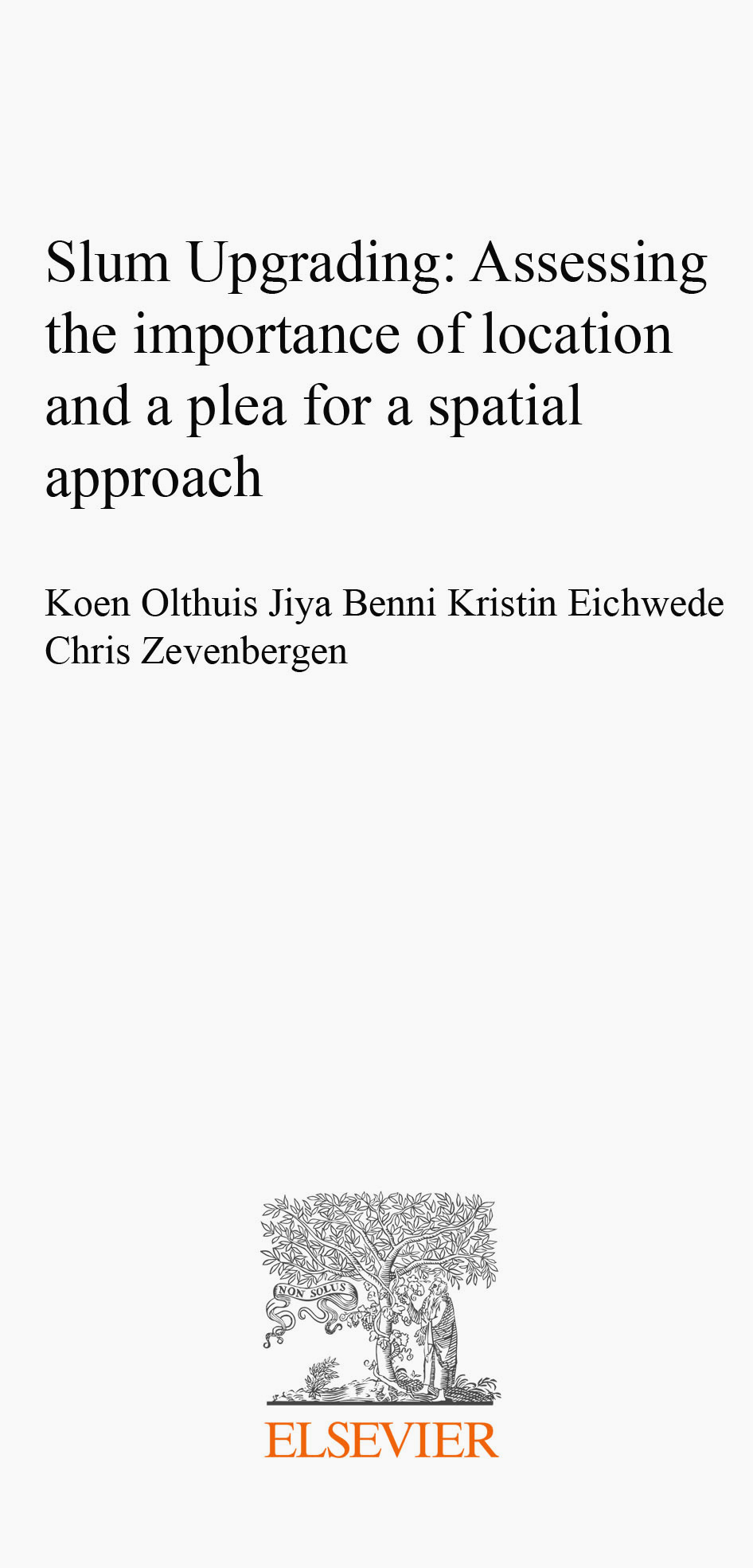
Slum Upgrading: Assessing the importance of location and a plea for a spatial approach
Highlights
Slum upgrading projects are dominated by the household-based UN definition of slums. The dynamic and diverse nature of slums due to location is not taken into account. This pushes slums, especially those prone to flooding, into a negative spiral. There is a need for an upgrading approach that integrates locational attributes. Flexible solutions using local techniques can address the dynamic nature of slums.
Abstract
The world population is growing rapidly and much of that growth is happening in urban areas. In developing countries, this process is often accompanied by the formation and expansion of slums. A variety of slum upgrading projects have been implemented to improve the living conditions of slum dwellers however a wide study to investigate the objectives of slum upgrading projects highlighted that environmental features were of low priority compared to basic services and infrastructure. The paper deduces this to be a result of the dominance of UN’s household-based definition of slums which lacks emphasis on the locational aspects. An aerial analysis of slums located near waterbodies emphasised the slums’ dynamic nature brought about by location and therefore the importance of location itself. Taking cue from this, the paper recommends upgrading projects to be more location-specific that offer flexible yet customised solutions that build upon local knowledge to account for the dynamic and diverse nature of slums. Another inference from the study was that for various reasons – one of which is hazardous location – slums are perceived to be temporary and as a result, there is low incentive to invest in slums. Such a perception prohibits slum upgrading and pushes them into a negative spiral. Concluding that slums are, however, permanent features in the urban landscape, the paper recommends a change in perception and urges practitioners to accept this permanent nature of slums. The focus and findings of this paper are relevant in context of the Habitat III Conference in 2016 which has as its focus the ‘New Urban Agenda’ that recognises the ever-changing dynamics of human civilization and aims to bring together diverse urban actors to review urban and housing policies.